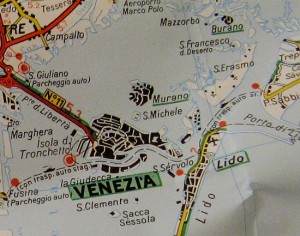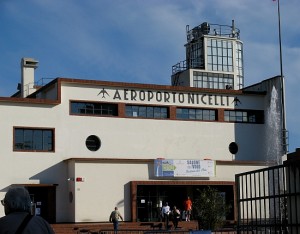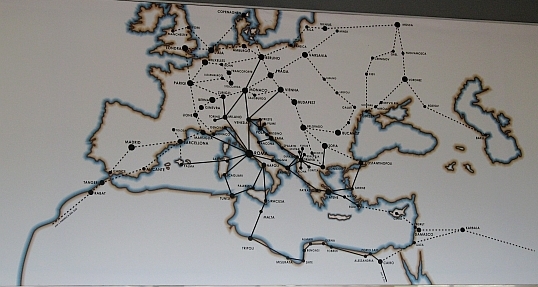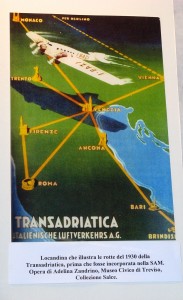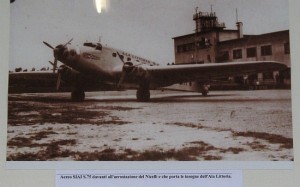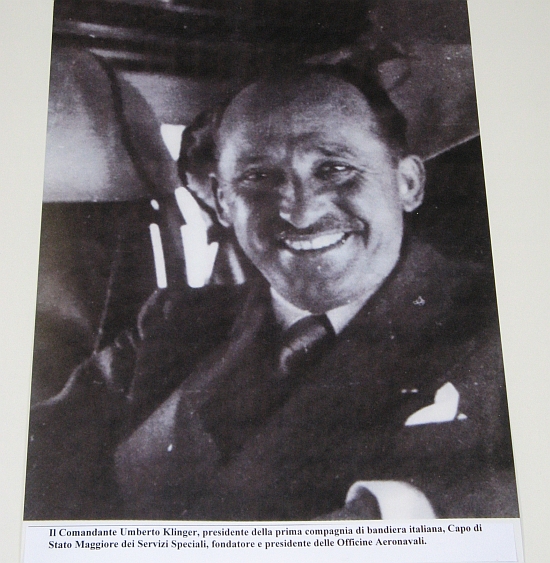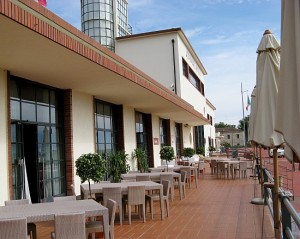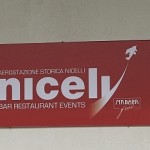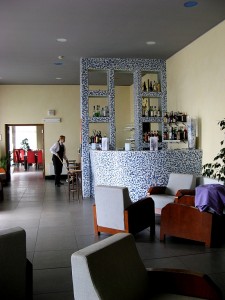
Back in the depths of the summer heat, about the time when the sun began to set and the air to cool, we liked to go outside and sit on the edge of our little fondamenta and watch everyone going to and fro along Fondamenta Sant’ Ana on the opposite side of the canal.
Many were hurrying along carrying boxes of pizza from via Garibaldi, presumably going home; others were dressed in ways showing various degrees of effort, heading toward via Garibaldi. Tourist couples and families were undoubtedly going in search of somewhere to eat, but where the variously adorned teenage girls were going is something of a mystery. They were dressed for bars and clubs, and while we have plenty of bars, I have no idea where the nearest club might be. But obviously they knew, and they meant to get there.
There were homeward-bound mothers dragging strollers over the bridge, and old ladies (and sometimes men) dragging loaded shopping trolleys, either from the Coop (if they’re proceeding from right to left) or the Prix (left to right). Speaking of dragging things, there were also a few rolling suitcases somewhere in the mix.

And of course there are always people Lino knows, or who know him, which is almost the same thing. I thought of those early evenings sitting outside as watching LinoVision.
Example: A 30-ish man was walking briskly with his little girl, who appeared to be four or five years old. He stopped and waved to Lino. His daughter’s little voice asked him “Who’s that?” He replied, “He’s someone who taught me how to row when I was little.” Smiles and waves. It’s really nice. They move on. I ask Lino, “Who’s he?” He replies, “I have no idea.” He’s taught thousands, probably, to row. Can’t be expected to remember them all.
A middle-aged blonde woman goes by. “See that woman? She used to work in the bakery in Campo San Barnaba.” (“Bakery? You mean Rizzo?”) Of course that’s what he meant, but it wasn’t always Rizzo. I’m a latecomer on the scene. But she herself isn’t what he’s remembering.
He grew up two minutes away from the bakery, down Calle Lunga San Barnaba, and it was owned by a man by the name of Morasco. “I went to nursery school with his son,” Lino said. This is not a startling thing to hear; by now, the people we encounter generally are sorted into a few broad categories: Went to nursery school with, went to school with, was in Scouts with, worked with, and a couple of “I used to be in love with”s.
“The family lived over the shop — the bakery itself stretched the entire length of the building from the campo to the rio Malpaga. They had an enormous room upstairs and it was full of toys. We didn’t have toys, but this room was full of them.”
“Was he an only child?” I guessed.
“Yes, he was. Died young, too. I don’t know of what.” There you go: Your next novel all sketched out.
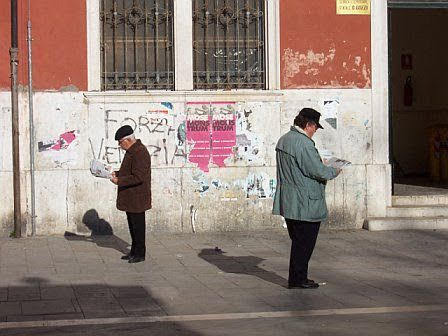
Another blonde woman, somewhat younger than the first, was going over the bridge. She’s a nurse in the blood-test department of the hospital; Lino used to go there occasionally for some intermittent checkups. Her technique with the needle would leave purple marks on his arm that looked like the Nile delta, and after the first two times he was sent to her station, he rebelled. He just said to another nurse nearby, “I’m not going to her.”
Why not? I didn’t hear his explanation, but it didn’t seem to surprise her. “Never mind, I’ll do it.” Maybe that’s why the blonde nurse never says hello.
Then there are the occasional individuals from his working life. For example, the silver-haired owner of the fish-stand, usually somewhere in the background cleaning fish. One day Lino noticed his resemblance to a long-gone colleague named Biagio.
“Are you Biagio’s brother?” he asked, as he was glancing casually at the array of fish.
“No, I’m his son,” was the reply. Discovering connections like this doesn’t strike anyone but me as wonderful. They evidently take it for granted.

We pass two older guys on via Garibaldi. One of them is a man I see fairly often, mixed into the daily mashup of locals. Does Lino know him? Trick question: OF COURSE HE DOES.
He came to the Aeronavali as an adult, as opposed to Lino, who started as an apprentice there when he was 16. He was what Lino termed an “aeronautical adjuster,” specifically a first-rate welder, one of those mythically talented workmen from the days before machines came with instantly replaceable parts. “He was amazing,” Lino recalled. “He could put the legs on a fly.” Just an expression, of course, but a compliment of the absolutely highest order. If you needed to connect anything to anything else, he was your man.
“I don’t know where he came from,” Lino went on. “When the Arsenal closed in 1955, some of their workers came to the airport. Or he might have been with the ACTV” — then called ACNIL — “I can’t say.” He came aboard some years after Lino, so not much more biography is available except that at some point he left to change careers, leaving behind the fly’s legs to work as a garbage collector. “He probably made more money,” is Lino’s conclusion. Mine too. You don’t become a garbage collector for the glory or the fame.


